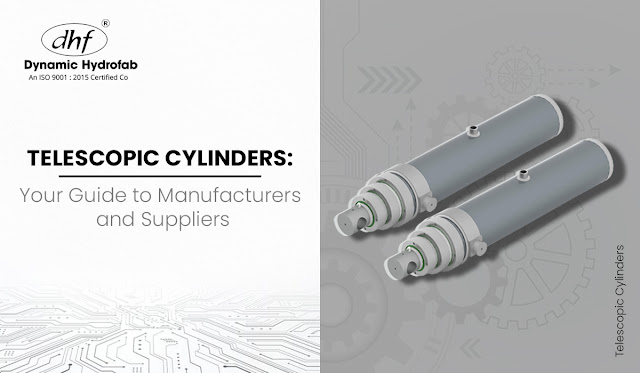Telescopic Cylinders: Your Guide to Manufacturers and Suppliers
A telescoping hydraulic cylinder is a
useful substitute if you require a hydraulic cylinder but your workspace is too
small for a regular rod cylinder. This is the finest option out of all of them.
In just 20% to 40% of their expanded length, telescopic versions can hoist the
same load as a conventional cylinder and hold the same amount of power when
compressed.
A telescoping hydraulic
cylinder by Telescopic Cylinders
Suppliers is the only practical choice, or the only option at all, in a
number of situations.
How
do hydraulic telescopic cylinders operate?
All telescopic hydraulic
cylinders operate on the same fundamental principle, despite their diverse
designs. These cylindrical structures are made up of layers of steel tubes that
get smaller and smaller.
Pulling back the cylinder
reveals the largest pipe, the barrel, to the unassisted eye. The working load
that is contained therein is attached to one end of the plunger, which is the
smallest pipe. Stages are extra portions that grow to make up the remaining
portion of the stroke.
A
Variety of Seal and Bearing Types
The guide bearings of Dynamic
Hydrofab Telescopic Cylinders support
each step of the cylinder to maintain the cylinders in the proper alignment.
These bearings can be used to determine the inner stage's projection from the
preceding stage as well as the degree to which the two stages overlap.
There is an almost infinite
selection of seals accessible, each with a distinct appearance and useful
function. For instance, packing nuts and stop rings are used during
installation of two popular designs: hinged-V seals and multi-lip seals. These
seals are there to provide room for the different telescopic parts. When the
exterior diameter of the smaller stage is less than the inner diameter of the larger
stage that contains it, a seal is created. The pressure needed for the
telescopic hydraulic cylinder to extend is produced by these kinds of seals.
Telescopic
Heads on Hydraulic Cylinders: Common Use Cases
In a number of situations, a Dynamic
Hydrofab telescoping hydraulic cylinder proves to be the most useful
instrument. For example, there's a good reason why dump trucks employ
single-acting cylinders so frequently.
Tipping a dump truck's
container to an angle of 45 to 60 degrees is necessary to empty it. The truck
bed's length is very close to the stroke length—regardless of length—that would
be needed to turn the container on its hinge. There's no way to retract the rod
completely, so never mind loading the truck to the point where it could be driven.
Selecting
the Best Hydraulic Cylinder for Your Needs in Telescoping
Finding the ideal telescoping
hydraulic cylinder requires knowing how much pressure and how long the stroke
should be in order to support the equipment's maximum load. To do this, you
must perform the appropriate calculations and possess a basic awareness of a
few details regarding your unique demands. Choose Dynamic Hydrofab who has a track record of creating
dependable parts that are highly regarded in your sector. Highly qualified
engineers and other experts with the training and expertise to finish your
project to your total satisfaction are probably on their staff.
Working with a manufacturing
partner that manages all parts of design and production in-house usually
results in superior oversight, quality control, and efficiency. Selecting Telescopic Cylinders Manufacturer like Dynamic
Hydrofab who can see your project through to completion is advised.











Post a Comment